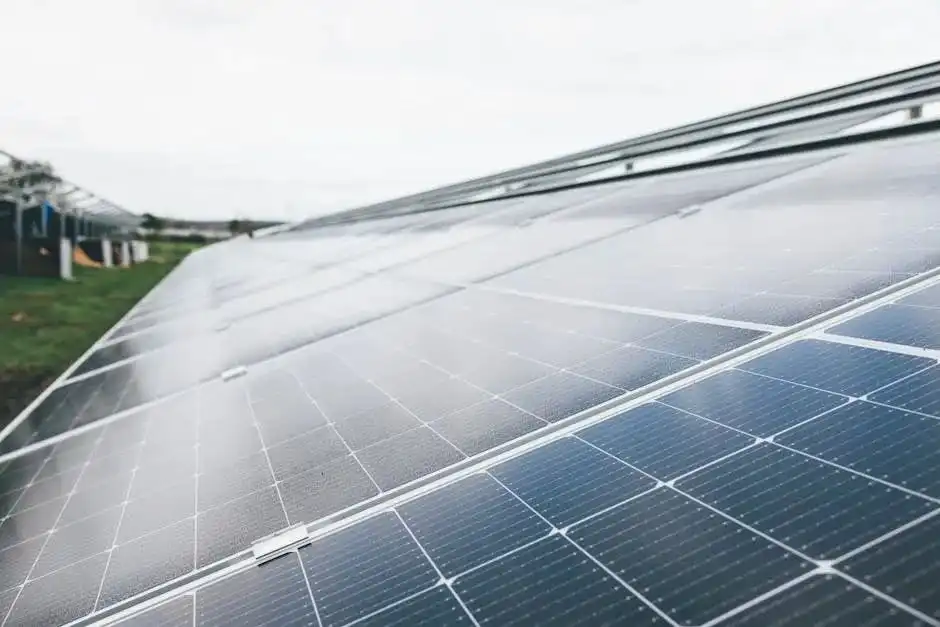The average price of photovoltaic modules this year will not exceed 1 yuan/watt
Industry insiders predict that the average price of photovoltaic modules will not exceed 1 yuan/watt this year, and there is little room for growth, and module manufacturers will face greater operating pressure.

China Huaneng recently announced the candidates for winning the bid for the 2023 photovoltaic module framework agreement procurement bidding, showing that the purchase scale is 10 GW, and the winning bid price range is 0.83 yuan/watt to 1.12 yuan/watt, which remains at a historically low level. Since March, Xinhua Power Generation, Shenzhen Gas and other energy companies have launched this year's component procurement bidding work. Judging from the currently announced bidding situation, there is not much difference in component prices and overall they are at a low level.
Industry insiders predict that the average price of photovoltaic modules will not exceed 1 yuan/watt this year, and there is little room for growth, and module manufacturers will face greater operating pressure. According to a reporter from China Energy News, shipments of some lower-priced orders have begun to decrease recently. In the next step, all major links in the photovoltaic supply chain will be in a fierce game.
Limited price increase
Public information shows that China Huaneng's bidding is divided into three bid sections, namely P-type double-sided double glass modules, N-type double-sided double glass modules and heterojunction modules. The bidding scales are 2 GW and 7.5 GW respectively., 500 MW. Among them, the average bidding price of P-type double-sided double glass components is 0.842 yuan/watt, and the lowest price is 0.83 yuan/watt; the average bidding price of N-type double-sided double glass components is 0.887 yuan/watt, and the lowest price is 0.87 yuan/watt; The average bidding price of heterojunction components is 1.07 yuan/watt, and the lowest price is 1.03 yuan/watt.
Shenzhen Gas also announced the bid opening of component procurement. The bidding scale is 300 MW. It does not divide the bid sections and does not specify the type of component product. The average bid price of 8 companies is 0.892 yuan/watt, and the lowest bid price is 0.858 yuan/watt.
Compared with the component bidding prices at the beginning of this year, the recent price has increased slightly. According to data released by Energy Trend, a new energy research center under industry analyst organization Jibang Consulting, in January, the minimum bid price for China Huaneng's 2G Giga-Watt P-type double-sided double glass module bidding fell to 0.79 yuan/watt, setting a new low. In February, Quanxing Group opened bids for 250 MW P-type modules. The bid price was between 0.82 yuan/watt and 0.88 yuan/watt, and the average bid price was 0.851 yuan/watt. Although the average bid price still maintained a downward trend compared with the previous period, the low bid price increased by 0.03 yuan/watt compared with January.
In addition, the bidding price of N-type components also showed signs of rebound. In February, a total of approximately 8.49 GW of N-type components were purchased and bid opened. The bid price ranged from 0.82 yuan/watt to 1.3 yuan/watt, and the average bid price was 0.948 yuan/watt, which was 0.016 yuan/watt higher than the average price in January. Heterojunction components have always been the type with the highest bidding price at present, and compared with other types of components, the bargaining space is better.
Willingness to raise prices appears
Yin Yize, deputy secretary-general of the Photovoltaic Dealers Alliance, said when analyzing the bid opening situation of Shenzhen's gas component procurement, that the bidder set an estimated price cap of 271.5 million yuan this time, and 3 of the 8 companies quoted prices consistent with the valuation cap, and another A new first-line brand quoted prices are also close to this upper limit. "It can be seen that component companies are currently strongly willing to raise prices and hope to repair their own profitability by promoting price increases in the industrial chain.”

"Component prices continue to fall below 1 yuan/watt and continue to hover near the cost line, putting great pressure on component manufacturers to operate. In fact, the price of components at around 1.2 yuan/watt is relatively reasonable, and component manufacturers can make profits without having to squeeze the prices of upstream links of silicon wafers and battery chips." A photovoltaic company executive told the China Energy News reporter,"But the current situation is that our prices are being pressed very low, so we must constantly negotiate with upstream suppliers. We definitely hope to report more if we can."
Third-party consulting firm InfoLink Consulting pointed out in the latest weekly price evaluation of the photovoltaic supply chain that component manufacturers have been trying to increase their prices recently. At present, component manufacturers are strategically differentiated:Some of them were very positive in judging the market trend and raised their prices for this reason; the other part still maintained low prices, and even executed orders below 0.85 yuan/watt in the early stage, which made it difficult to increase the overall price upward. Therefore, the overall forecast price in March is currently mainly stable, with a slight increase in the low-price zone. However, recently leading manufacturers have negotiated to reduce shipments of orders with prices below 0.88 yuan/watt, and it is necessary to see whether the price increase can be settled.
Short-term price stability
Since 2023, prices in the photovoltaic supply chain have been declining rapidly. Wang Bohua, honorary chairman of the China Photovoltaic Industry Association, said that starting from 2023, the prices of silicon materials, silicon wafers, batteries, and modules have continued to decline. Among them, the winning bid price of components dropped by more than 40% at the end of the year compared with the beginning of the year, and the proportion of component costs in the system dropped by more than 8%.
Tan Youru, an analyst at Bloomberg New Energy Finance, said that the manufacturing end of all links is currently facing greater cost pressure, especially the silicon wafer end and component link. Some companies have relatively reduced operating rates, and integrated component manufacturers have greatly increased their own The supply capacity of silicon wafers and batteries, so the market operation situation is not in short supply. Some manufacturers may prefer to reduce outsourcing or contract processing methods to ensure their own production conditions are good.
Energy Trend gives a similar view-at the supply level, component production scheduling is obviously differentiated, and orders from first-tier manufacturers have high visibility, so production scheduling is advancing steadily. However, the resumption of work by second-and third-tier factories is not as expected, and some manufacturers with heavy burdens are selling at low prices. After selling inventories, there is a willingness to shut down and exit; at the demand level, distribution is steadily driving domestic demand. Ground power stations are gradually pulling goods in the second quarter, while overseas markets may gradually start pulling goods. Component prices will remain stable in the short term, and whether the price can be reported to rise in the future remains to be observed by the terminal.
However, Tan Youru also said that the average component price this year is expected to remain at 0.85 yuan/watt to 0.87 yuan/watt. "Currently, N-type TOPCon components still have a certain profit. If market competition continues to deteriorate, future prices may be lower than expectations."

original title:There is little room for the average price of photovoltaic modules to rise this year
